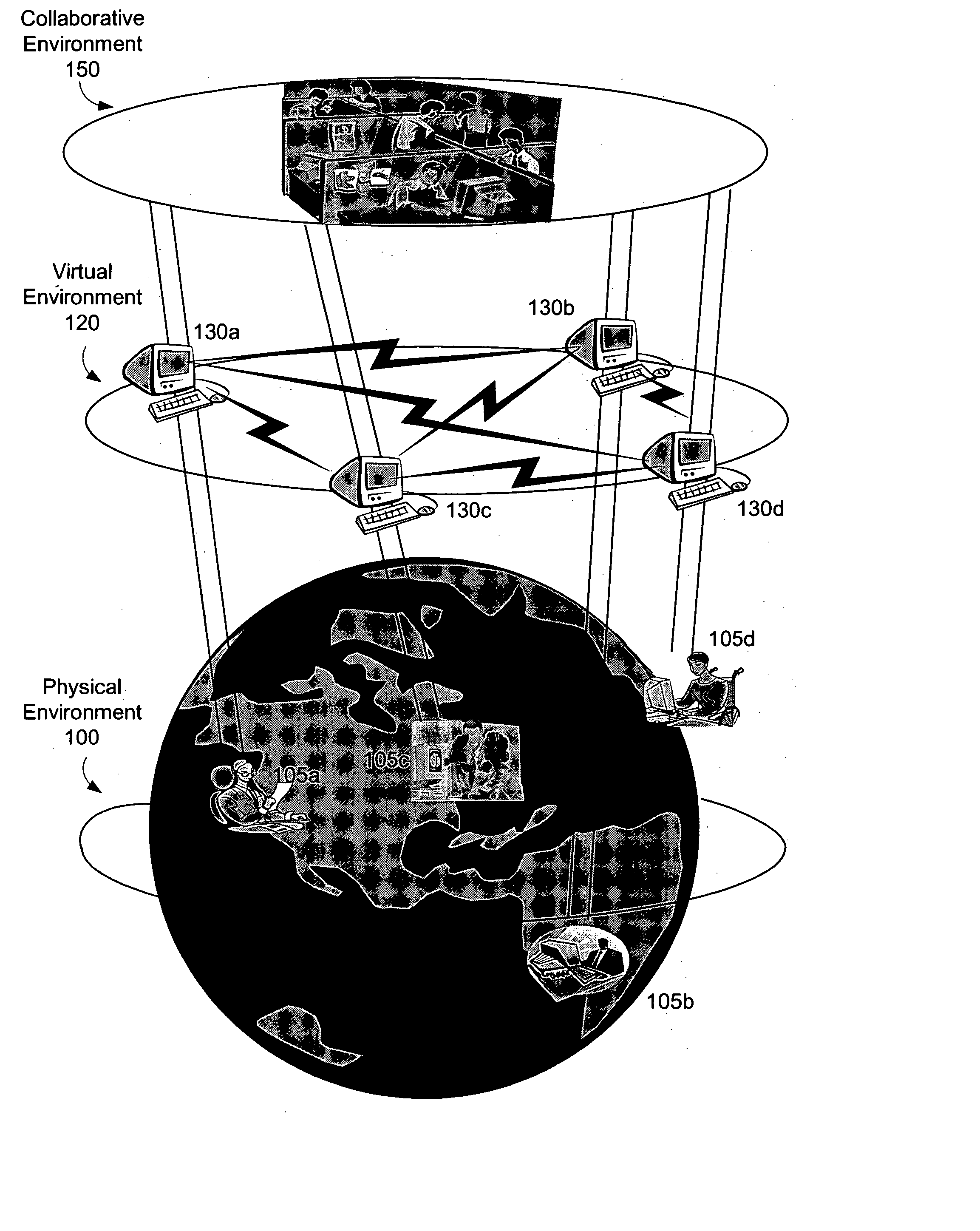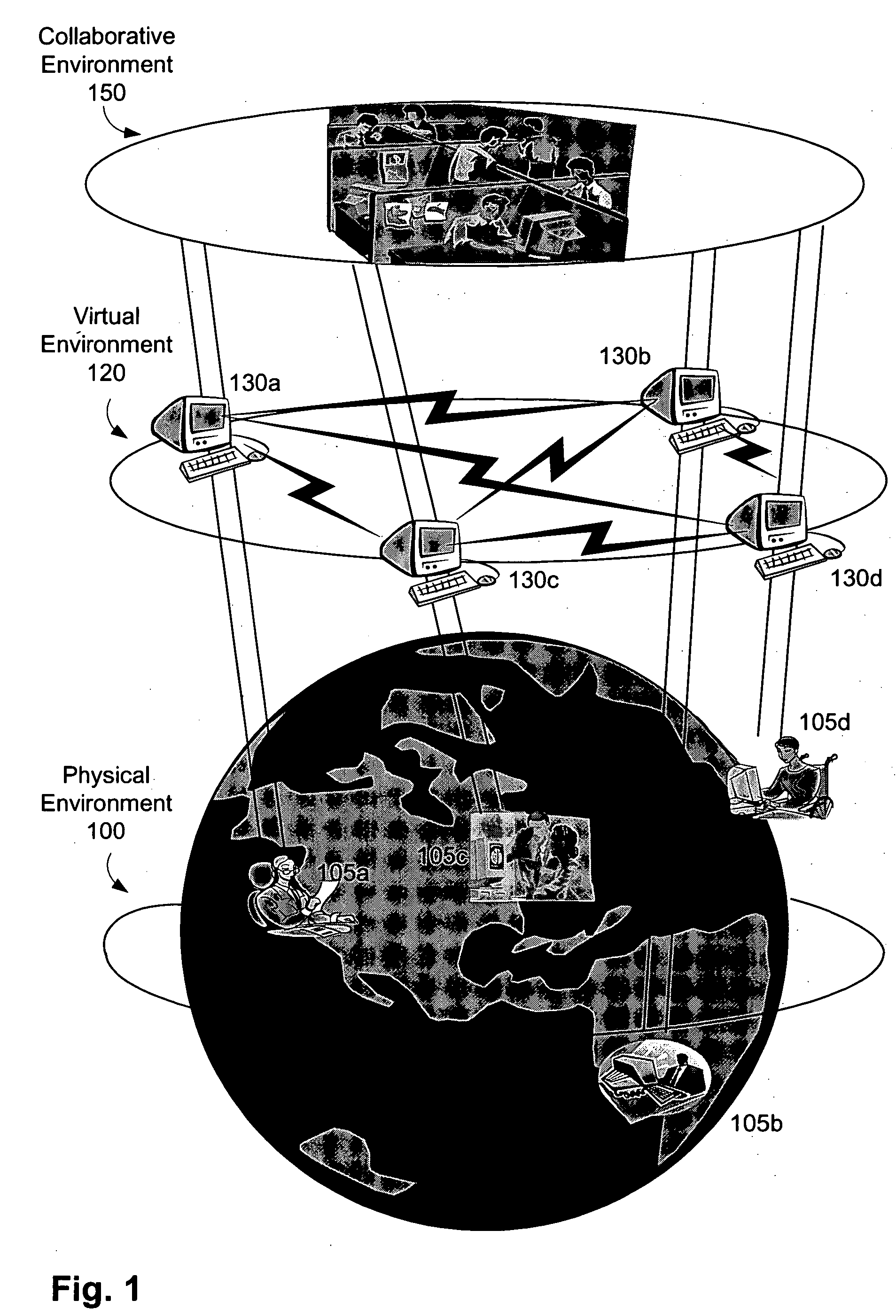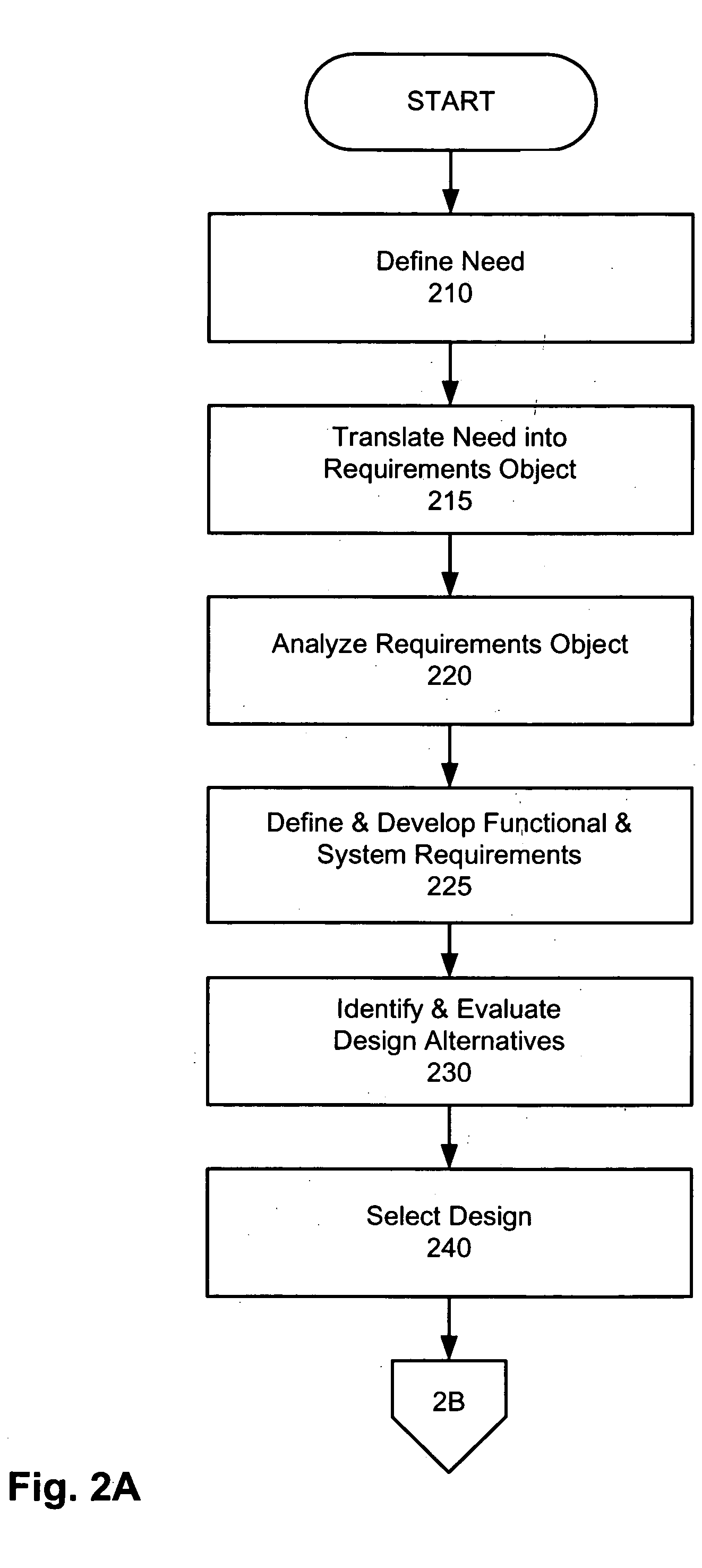System and method for collaborative systems engineering
a collaborative system and system technology, applied in the field of collaborative systems engineering and operations support environments, can solve the problems of large resources required to gather, analyze, and human integration of this data, and achieve the effects of preventing errors, preventing errors, and improving data visibility for decision makers
- Summary
- Abstract
- Description
- Claims
- Application Information
AI Technical Summary
Benefits of technology
Problems solved by technology
Method used
Image
Examples
Embodiment Construction
[0024] The invention is described in detail with particular reference to certain preferred embodiments, but within the spirit and scope of the invention, it is not limited to such embodiments. It will be apparent to those of skill in the art that various features, variations, and modifications can be included or excluded, within the limits defined by the claims and the requirements of a particular use.
[0025] The present invention is directed to a system and method for collaborative systems engineering and logistics support. The system and method permit accurate tracking of assets from design to disposal and provide relevant data regarding the asset to users throughout the asset life cycle. The present invention is implemented by the use of an application program on computers at stations where individual contributors perform their various work tasks and where others performing roles within the asset life cycle have occasion to view pertinent documents and data regarding the asset.
[...
PUM
 Login to View More
Login to View More Abstract
Description
Claims
Application Information
 Login to View More
Login to View More - R&D
- Intellectual Property
- Life Sciences
- Materials
- Tech Scout
- Unparalleled Data Quality
- Higher Quality Content
- 60% Fewer Hallucinations
Browse by: Latest US Patents, China's latest patents, Technical Efficacy Thesaurus, Application Domain, Technology Topic, Popular Technical Reports.
© 2025 PatSnap. All rights reserved.Legal|Privacy policy|Modern Slavery Act Transparency Statement|Sitemap|About US| Contact US: help@patsnap.com



